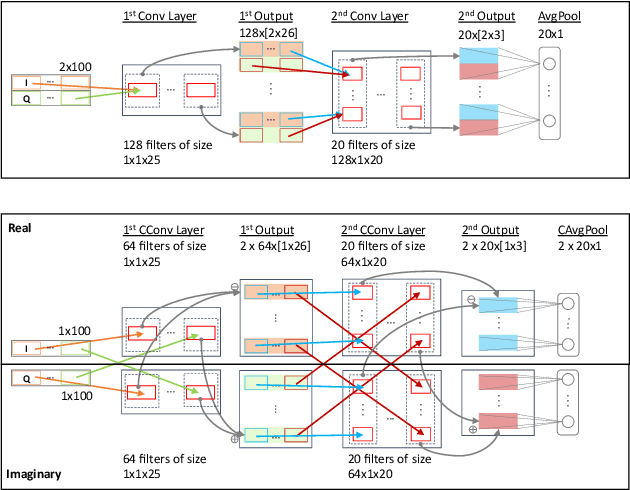Kathiravetpillai Sivanesan
Deep Learning-Enabled Zero-Touch Device Identification: Mitigating the Impact of Channel Variability Through MIMO Diversity
Jun 13, 2023Abstract:Deep learning-enabled device fingerprinting has proven efficient in enabling automated identification and authentication of transmitting devices. It does so by leveraging the transmitters' unique features that are inherent to hardware impairments caused during manufacturing to extract device-specific signatures that can be exploited to uniquely distinguish and separate between (identical) devices. Though shown to achieve promising performances, hardware fingerprinting approaches are known to suffer greatly when the training data and the testing data are generated under different channels conditions that often change when time and/or location changes. To the best of our knowledge, this work is the first to use MIMO diversity to mitigate the impact of channel variability and provide a channel-resilient device identification over flat fading channels. Specifically, we show that MIMO can increase the device classification accuracy by up to about $50\%$ when model training and testing are done over the same channel and by up to about $70\%$ when training and testing are done over different fading channels.
An Analysis of Complex-Valued CNNs for RF Data-Driven Wireless Device Classification
Feb 20, 2022



Abstract:Recent deep neural network-based device classification studies show that complex-valued neural networks (CVNNs) yield higher classification accuracy than real-valued neural networks (RVNNs). Although this improvement is (intuitively) attributed to the complex nature of the input RF data (i.e., IQ symbols), no prior work has taken a closer look into analyzing such a trend in the context of wireless device identification. Our study provides a deeper understanding of this trend using real LoRa and WiFi RF datasets. We perform a deep dive into understanding the impact of (i) the input representation/type and (ii) the architectural layer of the neural network. For the input representation, we considered the IQ as well as the polar coordinates both partially and fully. For the architectural layer, we considered a series of ablation experiments that eliminate parts of the CVNN components. Our results show that CVNNs consistently outperform RVNNs counterpart in the various scenarios mentioned above, indicating that CVNNs are able to make better use of the joint information provided via the in-phase (I) and quadrature (Q) components of the signal.
 Add to Chrome
Add to Chrome Add to Firefox
Add to Firefox Add to Edge
Add to Edge